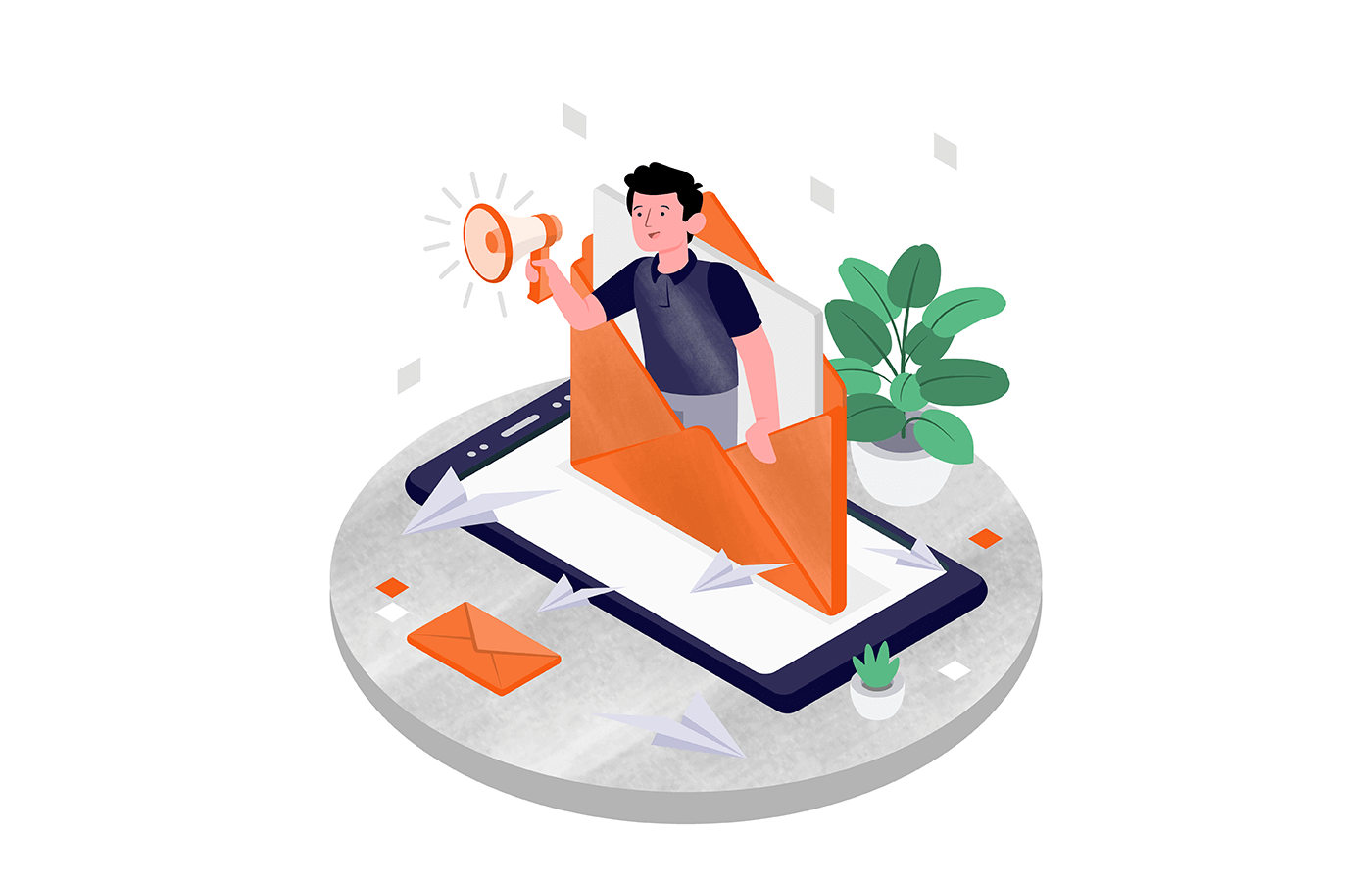Email marketing is getting stronger than ever.
Currently, there are 244.5 million active email users in the U.S. alone (and it’s still growing), and 60% of them prefer to receive regular updates and promotions from companies they are interested in via email. That’s a huge potential!
Does your small business have the means and budget to leverage email marketing? Absolutely, it’s one of the most cost-effective marketing channels, boasting an average $36 return on investment for every dollar spent. If anything, it’s a must-have for growing your business.
So, how do you do email marketing? In this blog post, you’ll learn:
- How to build an email marketing framework;
- What types of marketing campaigns are there, and some of the best examples from other small businesses;
- Obstacles faced by small businesses in email marketing and ways to overcome them.
But before anything else, let’s learn why email marketing is the go-to solution for your small business success.
Benefits of Email Marketing for Your Small Business
Every marketing dollar counts for small businesses, and getting the most from your budget can be a game-changer. This is where email marketing shines, offering the following benefits:
Cost-Effective Marketing Strategy
As we previously mentioned, email marketing boasts an impressive average ROI of 3600%. Let’s delve into the details, shall we?
Email marketing is accessible for small businesses because it’s very easy to start. You don’t need to empty your pockets to kick off your campaigns — those initial costs are pretty low, ranging from $15 to $120 monthly (though, there are also pricier options). Also, as your business grows, you can adjust your email plan.
There are tons of email marketing services out there that understand small businesses. They offer affordable packages suitable for everyone; some even have free options with limited features if you’re starting.
These services usually charge based on how many emails you send, so you’re not stuck with hefty bills. For example, if you want to send 30K emails monthly, you can pay as little as $16.

Reach of Target Audience
Don’t settle for people just reading your emails. You also want them to be interested in your products and services. That’s the power of targeted audience reach in email marketing.
Segment your audience into specific groups based on demographics, interests, purchasing behavior, and more. This level of targeting ensures that each email resonates with its recipients, boosting engagement and conversions.
But the benefits don’t stop there. By tailoring content to each audiences’ needs and preferences, you can enhance the customer experience.
Measurable Results
When doing email marketing, you can track your email marketing campaigns’ performance in real time.
Keeping an eye on email metrics like open and click-through rates is important for understanding how engaged your subscribers are. These numbers show what your audience loves, likes, or isn’t a fan of.
Plus, analyzing your email marketing campaign data lets you see the bigger picture – like which subject lines or content types get people engaged and clicking.
But it’s not just about opens and clicks! Other metrics, like conversion, bounce, and unsubscribe rates, give you even more insights.
By keeping tabs on all these numbers, you can make smarter decisions to fine-tune your email marketing and engage your subscribers..
Boosts Sales and Conversions
Successful email marketing campaigns also often result in high sales and conversions. In fact, 60% of consumers have purchased due to a marketing email they received.
It’s the biggest proof that good email marketing strategies hold the power to influence consumer behavior.
Builds Strong Customer Relationships
Email marketing isn’t just about sending messages; it’s about sparking meaningful conversations and lasting connections with your audience.
Through personalized and targeted email campaigns, you can captivate your customers’ attention, driving higher levels of engagement and interaction. In fact, you can expect your personalized emails to be opened 82% more than generic emails.
Email marketing also provides a platform for ongoing communication and relationship-building with your audience. By asking for feedback, responding to questions, and providing helpful information, you show customers that their opinions matter. This two-way dialogue grows trust and strengthens the bond with the audience.
Highest ROI Marketing Channel
Email marketing has the highest return on investment (ROI) out of all marketing channels. No, not by little. Quite by far!
For every dollar you invest in email marketing, you can expect an average return of $36, which translates to a staggering 3600% ROI. This significantly outperforms other marketing channels, such as social media ads (average ROI of 250%) and search ads (average ROI of 1700%).
What’s more, email marketing is effective in both customer retention and acquisition.
In fact, email marketing is 40x more effective at acquiring new customers than Facebook and X (former Twitter) combined. Plus, traffic from email campaigns boasts an average conversion rate of 4.29%, which is higher than social media (1.81%) and search traffic (3.04%).
This means that email marketing not only helps you attract new customers but also keeps your existing ones engaged and coming back for more.
Want to create professional email newsletters with irresistible content? That couldn’t be easier with Sender’s drag-and-drop email builder!
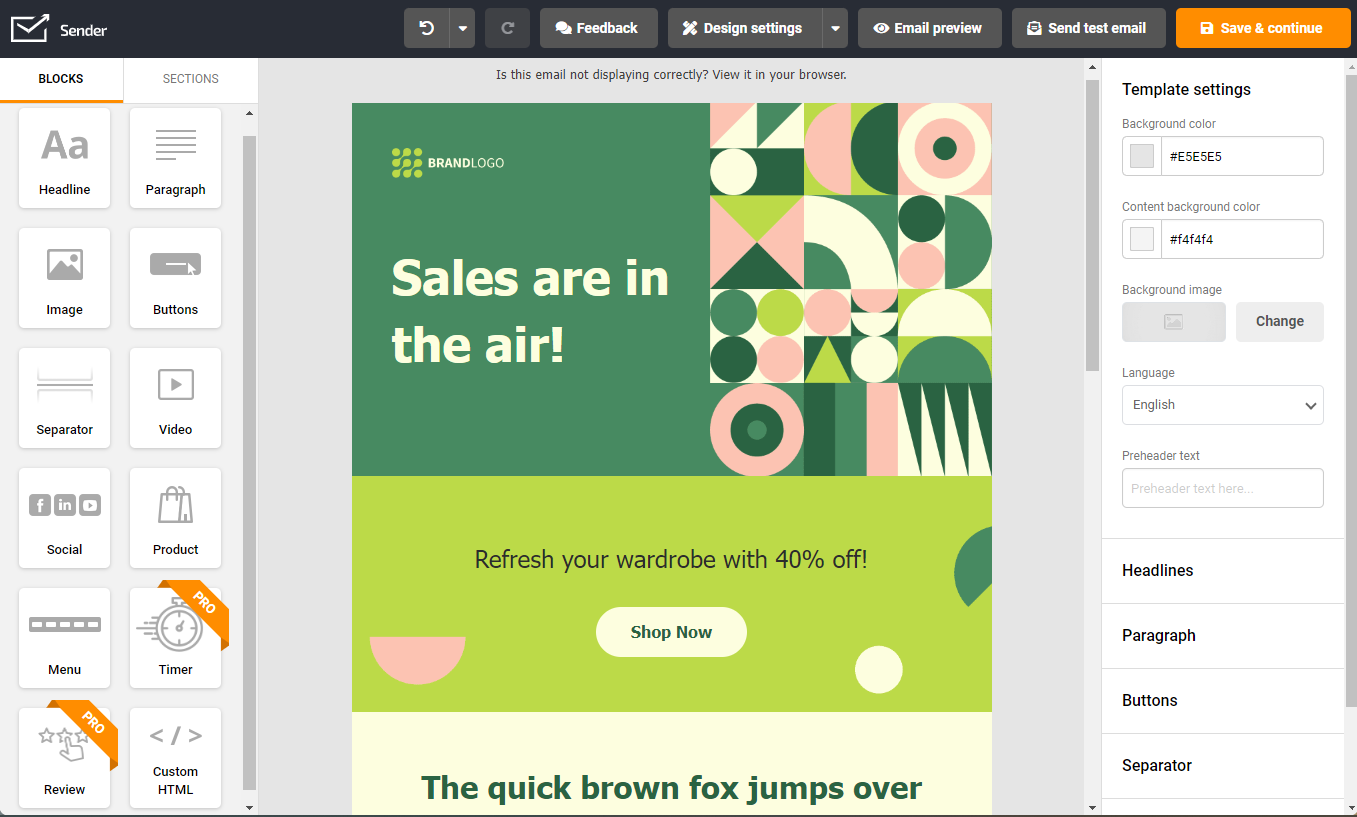
Building an Email Marketing Framework
Did the time to send your first marketing email finally come, yet you need help figuring out where to start?
Follow these steps to send your first campaign, keep improving, and you’ll be creating effective email marketing strategies in no time:
1. Define Your Goals
First, you need to determine what you want to achieve with your email marketing efforts. Clearly defined goals will shape your entire campaign, helping you stay focused and reach your objectives efficiently.
Identify Objectives
Once you have defined goals, deciding which email types are the best for achieving them will be easier. For example, content roundup emails are a good choice if you want to highlight your expertise.
Want to boost your sales for a short period? Send a promotional email announcing a flash sale. And include an urgency-inducing countdown clock for a good measure.
Set SMART Goals
Your goals should be clear and achievable if you’re aiming at success. Or, in other words, S.M.A.R.T.:
- Specific: Define clear, detailed goals (e.g., “increase subscribers by 20% in three months”);
- Measurable: Use metrics to track progress (e.g., open rates, click-through rates);
- Achievable: Set realistic targets based on your resources;
- Relevant: Ensure goals align with your broader business objectives;
- Time-bound: Set deadlines to create urgency (e.g., “boost open rates by 5% this quarter”).
2. Build Your Email List
The bigger the audience, the more people you reach with your email marketing messages and convert.
There’s more than one good way to collect your prospects’ emails:
- Add a signup form on your website. Make it easy for visitors to join your email list by including a simple form on your website where they can sign up with just a few clicks;
- Create a dedicated signup landing page. Design a special page on your website that invites people to join your email list. Share the benefits of subscribing and make it easy for people to sign up;
- Add a signup button on your social media accounts. Let your social media followers know they can get exclusive updates and offers by joining your email list;
- Promote your newsletter on other channels. Regularly promote your email list through various channels, including your podcast, social media, and guest appearances on other podcasts or platforms.
3. Understand Your Audience
Yes, email marketing lets you talk with your whole audience. However, remember that your subscribers aren’t a faceless mass. Understanding their needs, behavior, and preferences and addressing them is the straightest way to get to their hearts.
So, how do you find out what makes your subscribers tick and send them emails that they actually want to open and read? It’s a two-step process:
Create Buyer Personas
When you create buyer personas, you develop detailed, fictional profiles of your ideal customers based on market research and real data to better understand their needs and behaviors.
- Research. Gather customer information through surveys and data analysis to find common traits;
- Identify key attributes. Note details like age, job, and common goals or problems
- Name your personas. Give your ideal customers names and stories to make them real;
- Detail their journey. Map out how they interact with your brand from start to finish;
- Use personas in email strategy. Tailor your emails to each persona for better relevance.
Segment Your Audience
Segmentation involves dividing your audience into smaller groups based on specific characteristics or behaviors. Only by segmenting can you deliver personalized messages for effectiveness.
- Choose segmentation criteria. Pick criteria like demographics, purchase history, or engagement level;
- Create segments. Divide your email list based on these criteria;
- Personalize content. Send each segment emails that speak directly to them;
- Test and refine. Check how each segment responds and use this to improve your approach.
Learn more about customer segmentation: definition, examples & tools.
4. Choose an Email Marketing Platform
An email marketing platform is a must-have for small businesses as it makes sending professional, personalized emails to lots of people super easy and efficient.
Plus, it offers handy features like automation and analytics to help you connect with customers better and make smart decisions while keeping you on the right side of email marketing rules.
Features to Look For
Gazing at affordable email marketing platforms? Here’s what features you might need:
- Drag-and-drop builder and email templates. Create emails that look great on any device without needing any design or coding skills;
- Automation. Save time efforts by setting up automated email sequences like welcome messages, cart abandonment reminders, or follow-up emails;
- Segmentation and personalization. Tailor your email content based on customer behavior, preferences, or demographics and address recipients by their names or other personalized information;
- Analytics. Track the performance of your emails in real time, gaining insights into open rates, click-throughs, and conversions to optimize future campaigns.
Bonus
- Popup builder. Create customizable popups to grow your email list.
- Landing page builder. Design landing pages to increase your conversion rates.
Popular Platforms
Coming from a small business, you’re probably feeling pressure to find the best email marketing software. After all, the wrong choice might be strenuous on your already stretched budget.
These email marketing services present the best cost and quality combination, so you can choose without worries:
Sender
Sender is one of the most intuitive, affordable, and feature-rich email marketing tools.
You’ll have a form builder for effortlessly building email lists, a drag-and-drop builder for responsive email creation, a human-friendly automation builder, and so much more at your fingertips.
If that doesn’t convince you, wait until you see the price tag — the tool is free for up to 2,500 subscribers!
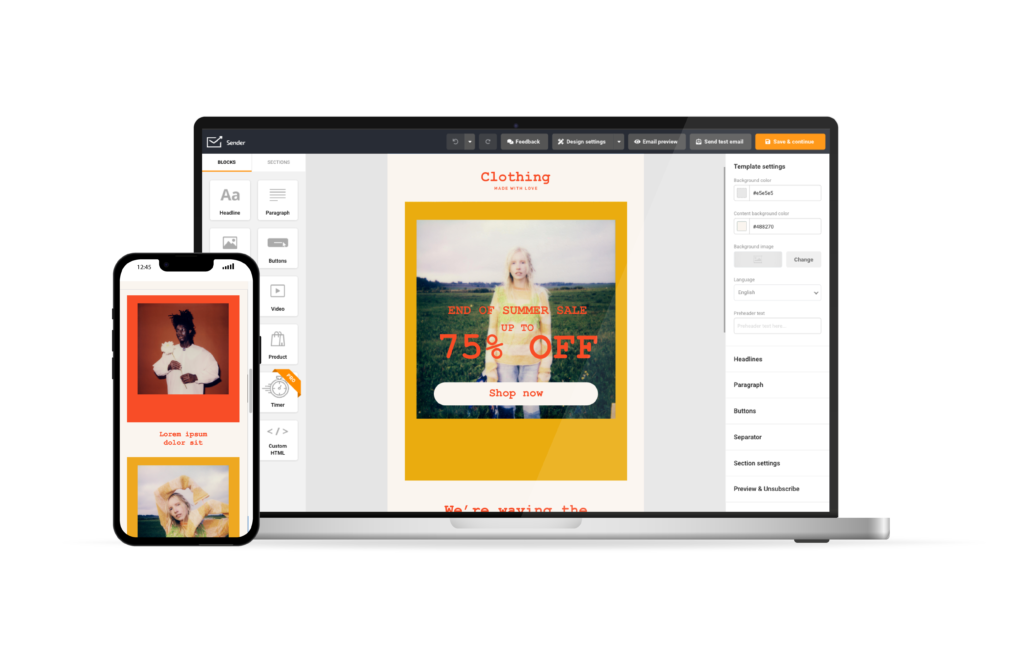
Constant Contact
Constant Contact is widely known for its friendly interface, making it popular among email marketers.
It might interest newcomers, providing simple yet effective tools for crafting email campaigns, managing your contact lists with ease, tracking how your emails perform, and creating professional-looking email templates.
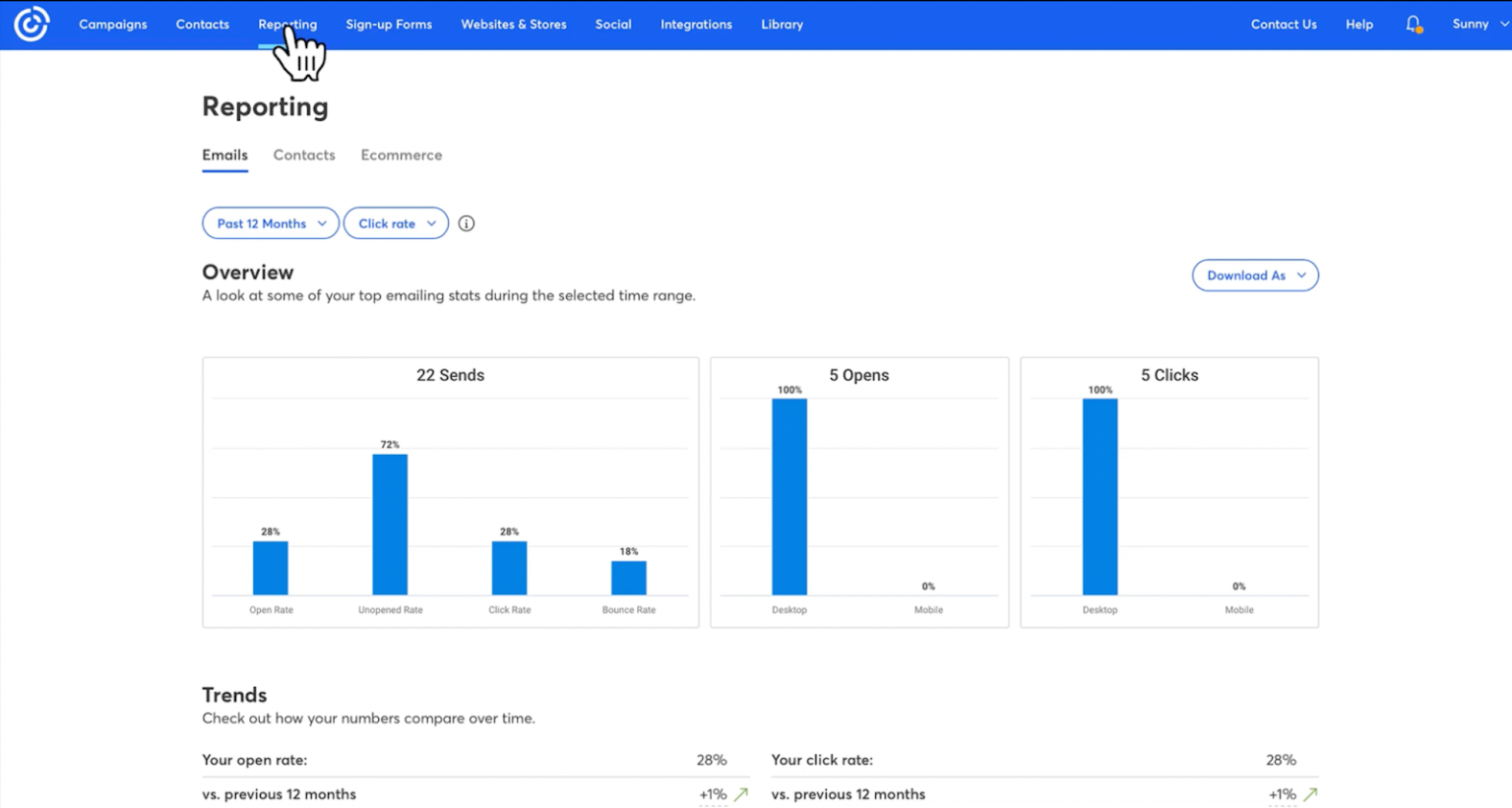
Brevo
Brevo offers an email marketing solution that’s flexible and grows with your business. With its tiered pricing, even small businesses can start strong and expand effortlessly.
As your needs evolve, Brevo steps up with advanced tools and higher sending limits to support you every step of the way.
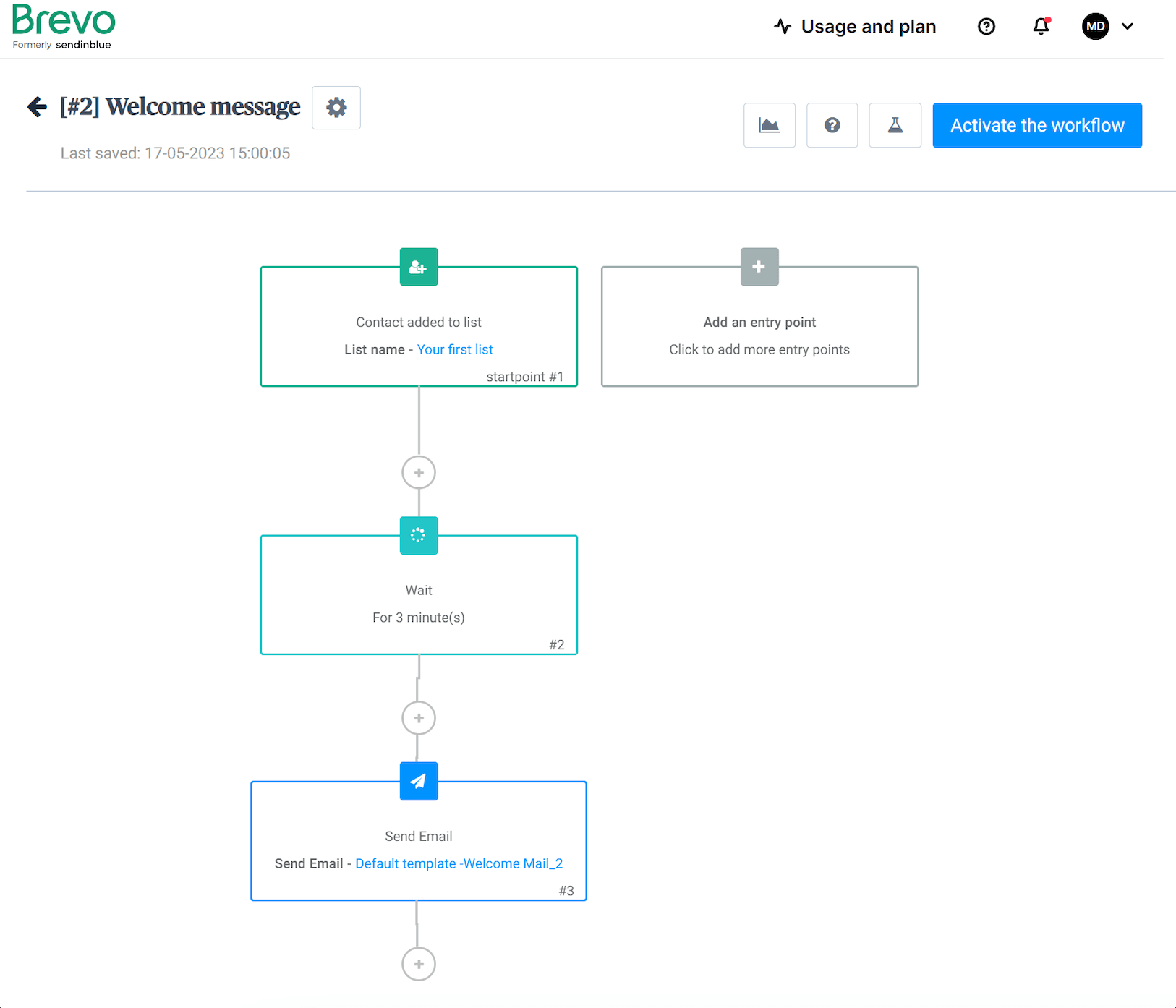
5. Design Your Emails
With a goal in mind and a good email marketing platform at your fingertips, designing an email is a relatively easy task.
Yet, before starting, you should know a few things that will help you craft emails that are not only stunning, but also carry out their purpose.
Email Templates
If you’ve chosen an email marketing platform with a drag-and-drop builder, it should also offer customizable templates. Choose yours depending on the visual style you’re after or, more commonly – based on their purpose:
Welcome emails are sent to new subscribers or customers to greet them warmly and provide essential information about your offerings.
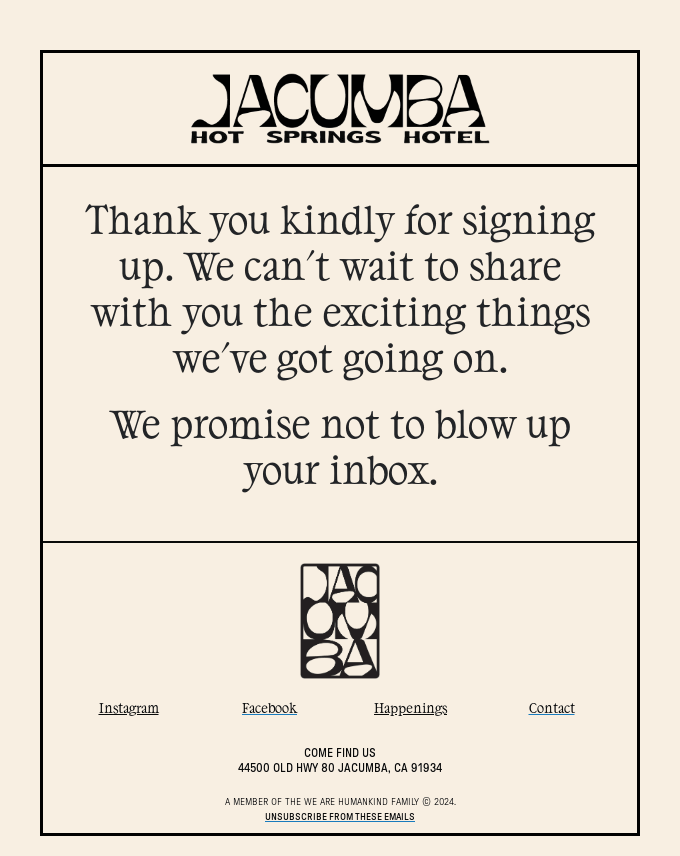
Promotional emails are used to showcase your products, services, or sales events.

Newsletters are designed to share regular updates, news, or articles.

Transactional emails are triggered when a user takes an action, like confirming a purchase or resetting a password.

Abandoned cart emails are sent to remind customers of items left in their online shopping cart.
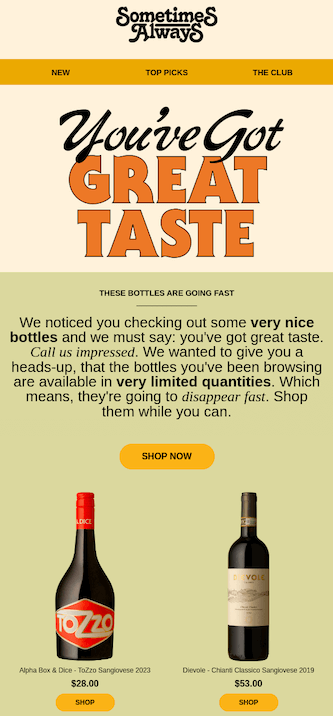
Re-engagement emails are meant to reach out to inactive subscribers and re-engage them with your brand.

Feedback emails are designed to ask for feedback from your customers or subscribers.

Event invitation emails are sent to invite your subscribers to events, webinars, or conferences.

Email Content
When writing your email, keep these best email content practices in mind:
- Personalize your emails;
- Craft a clear and enticing subject line;
- Focus your email on one main message;
- Write in a conversational tone, avoiding jargon;
- Include a clear and prominent call-to-action (CTA);
- Offer value to your recipients by providing helpful information, exclusive discounts, or other incentives.
6. Automation and Workflows
With email marketing automation, you can send automated and timely emails to your subscribers based on predefined triggers.
It’s the best thing since sliced bread, helping small businesses save time, improve efficiency, and deliver personalized content to your audience.
Learn how to write a high-converting email copy to make sure your emails are not only beautiful, but also compelling and effective.
Drip Campaigns
One of the most encountered types of automated emails are drip campaigns, a series of pre-written emails sent to subscribers over time. These campaigns are designed to nurture leads, onboard new customers, or educate subscribers about your product or service.
Behavioral Triggers
Behavioral triggers are specific subscribers’ actions or events that start an automated workflow (including drip campaigns). Here are the most common examples:
- Abandoned cart: An email is sent to a subscriber who added items to their shopping cart but didn’t complete the purchase;
- Subscription: An email is sent to a new subscriber after they leave their email address;
- Purchase confirmation: A customer receives an email to confirm their purchase and receive additional information about the product or service.
7. Analytics and Optimization
This is where you’ll really see what’s working and what needs improvement. Tracking your email marketing campaigns’ performance and making changes based on the data is key to success.
Key Metrics to Track
So, how do you track your campaign performance? Here are some key metrics:
- Open rate measures the percentage of subscribers who open your emails;
- Click-through rate measures the percentage of subscribers who click on a link in your email;
- Conversion rate measures the percentage of subscribers who take a desired action, such as making a purchase or filling out a form;
- Unsubscribe rate measures the percentage of subscribers who unsubscribe from your email list.
Analyze Performance
Analyze your performance to understand what’s hot and what’s not in your campaign, and how you should optimize it:
- Look for trends and patterns;
- Segment to identify which segments of your audience are most engaged and which segments need more attention;
- A/B test to see which email version performs better;
- Make data-driven decisions.
Types of Email Campaigns for Small Businesses
Integrating different types of email marketing can enhance the overall marketing strategy of your small business. Let’s see what those types are:
Welcome Series
Coming from a small business, you know best how much it costs to bring in new prospects. That’s why first impressions are crucial. Represent yourself well from the very first word with welcome emails.
These emails are eagerly awaited by 74% of users once they subscribe to an email list. This results in an impressive average open rate of 69%. It’s your business’ best time to shine.
A person on the Kin Euphoric marketing team did a good job creating such a welcome email. It has all the right components. Not only does it make the new subscriber feel welcomed, but it also tells the brand story and shares a welcome gift.

If you don’t want to overwhelm your subscribers with a novel-length welcome email, you can also consider sending a series:
- Email 1: Welcome Message. Warmly greet the new subscribers and inform them about what they might expect from you via email in the future.
- Email 2: About Us. Tell about your brand and products or services, such as how they came to be and what values stand behind them.
- Email 3: Exclusive Offer. Include an exclusive discount or offer, available only to new subscribers, as a small token of appreciation and to incentivize their first purchase.
Promotional Campaign
Promotional emails inform customers about special deals, product launches, or exclusive offers, directly impacting sales.
How do you craft an effective promotional email? Consider a few key factors.
First, it’s behavioral targeting. This tactic ensures that your customers are notified about sales on products they’ve already shown interest in, boosting engagement through the roof.
Another thing is that promotional emails should induce urgency to encourage immediate action. For example, a flash sale email featuring a countdown timer is an (almost) unbeatable duo for bringing in sales.
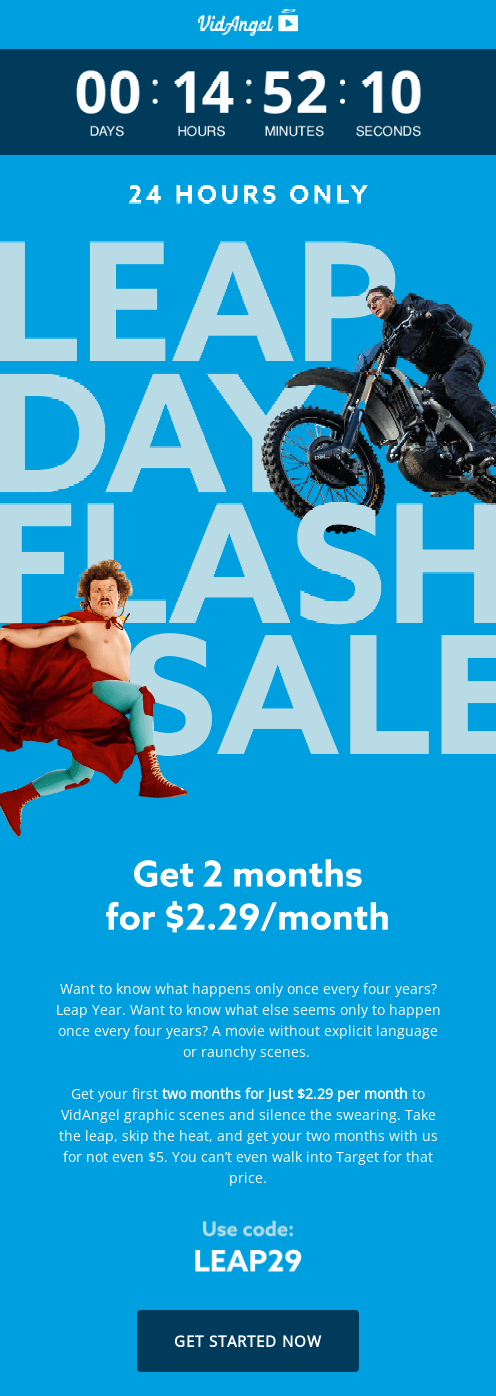
If you have a bigger sale or offer coming up and want to ensure that it stands out in the already crowded inboxes, consider promoting it through a series of emails:
- Email 1: Teaser. Tease the upcoming offer a few days before it’s launched. Create excitement but don’t overpromise;
- Email 2: Launch Announcement. Announce all the key details of the offer: the discount, period, and any terms and conditions that apply;
- Email 3: Last Chance. Hurry your subscribers to benefit from the offer until it’s too late.
Pro tip: While sale emails often bring in more revenue than others, bombarding subscribers with too many can lead to fatigue and reduce overall email effectiveness.
In the long run, it’s better to balance promotional content with valuable, subscriber-focused content to build stronger connections and loyalty.
Re-Engagement Campaign
You know that bringing in new customers is a must, but it’s no secret that it can eat up your budget – keeping a customer you already have is 5x cheaper than finding a new one. That’s why turning those one-time shoppers into your biggest fans is smart.
So, if you have customers who’ve stopped engaging with your brand, it’s time to rekindle those flames. That’s where re-engagement campaigns come in.
The key here is not to waste time. When you notice that some customers aren’t as active, it’s time to act. The quicker you reach out with a re-engagement plan, the better your chances of getting them back on board—and maybe even turning them into lifelong customers.
The purpose of the re-engagement campaign is to remind inactive customers that they’re valued and that your business still has something in for them:
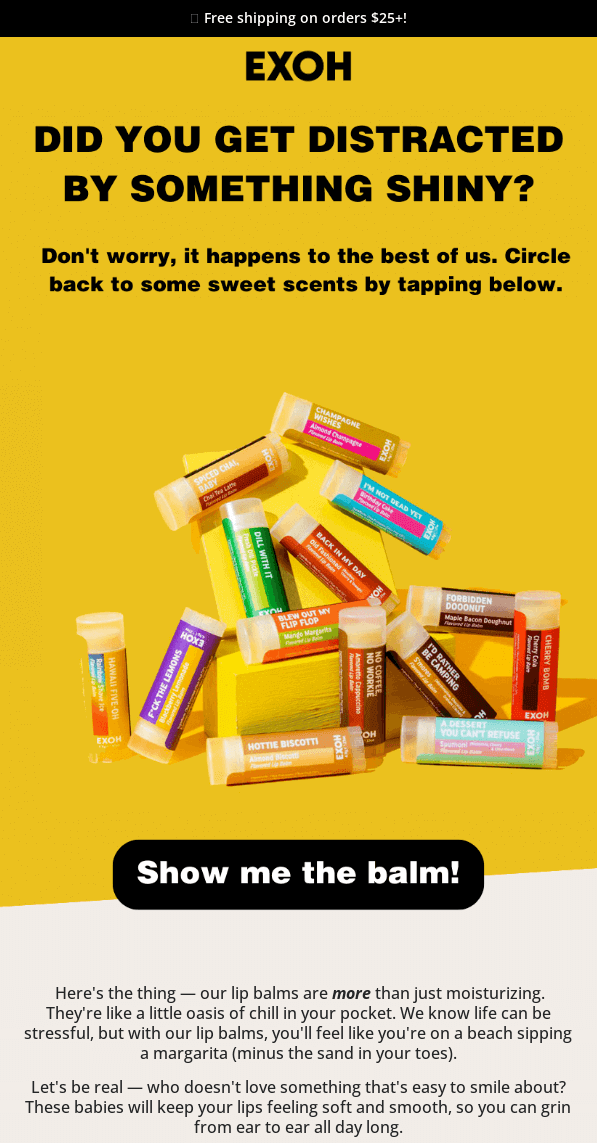
Re-engagement campaigns come in many different shapes and sizes, but most of them include the following emails:
Email 1: We Miss You. As the name suggests, the purpose of this email is to show the customer some appreciation and remind them about your brand and great products.
Email 2: Exclusive Content. Staying your old ways won’t get you far in luring your customers back. Share some updates, news, or other never-seen-before content to arouse their curiosity.
Email 3: Final Attempt. Some inactive customers need more push than others. An attractive offer like a discount might do. If they don’t come back then… well, it’s time to part ways.
Obstacles Faced by Small Businesses in Email Marketing
For a small business, email marketing can look wary as it comes with challenges. If you’re one of them, fret not! There’s a solution to each challenge and sweet fruits to be reaped afterward:
Building a Quality Email List
Building your email list is like creating a community of individuals who are all ears to what you have to say. With this list, you have a direct connection to your audience, allowing you to nurture relationships, promote products or services, and ultimately grow your business.
However, small businesses often struggle because they have fewer marketing and lead-generation resources. But what if we tell you that it shouldn’t be an obstacle, as anyone can build a quality email list? Following the practices listed above is more than enough.
Pro tip. Don’t forget about list maintenance! Regularly cleaning your list by removing inactive subscribers ensures that your emails reach engaged and interested recipients, maintaining high open rates and maximizing the impact of your email campaign. Not to mention the positive impact on email deliverability in the long run.
Maintaining Consistency
You know better than anyone that small teams often juggle multiple responsibilities, making it hard to focus on crafting regular, high-quality emails.
This inconsistency can lead to a disconnect with customers, as they receive emails at irregular intervals or with varying quality. Unfortunately, it doesn’t help build trust or keep your audience engaged.
That’s why you need to develop a clear, comprehensive email marketing plan where you outline:
- the frequency of emails;
- the types of content to be shared
- the goals for each campaign.
Share this plan with your team and train the members to follow it to a tee. This way, you can be sure that your email strategy aligns with your business goals and customer needs.
Competition and Noise
Another painfully familiar challenge is posed by others – more specifically, the intense competition and a barrage of digital noise.
Consumers are bombarded daily with countless emails from various businesses vying for their attention. Standing out from the crowd and communicating messages that resonate with the audience might seem daunting.
However, there’s always a ray of hope. As long as your content is compelling and you find creative ways to cut through the clutter, you’ll get noticed and make a lasting impression.
Personalization and Segmentation
Given small businesses’ tight budgets and limited resources, crafting personalized email campaigns is a tall order. Gathering the right data and tools to send targeted and personalized messages that truly connect with your audience is tough, but don’t let that discourage you.
You can still make it work by starting with what you’ve got. Identify a few key customer groups and tailor simple messages that speak to them. Look for user-friendly email marketing tools and tap into available resources to learn as you go.
Keep it straightforward, focus on what you can handle now, and then build from there. With a practical approach, you’ll create personalized email campaigns and send them in no time.
Find out more in this article: Email Personalization: Guide to Personalized Email Marketing
Adapting to Trends and Technologies
An email marketing strategy should also adapt to trends and technologies for it to be effective. We aren’t referring to the latest design trends, the latest email marketing platforms, or the most advanced laptops for email marketing services. No, we’re talking about two trends that won’t die any time soon — automation and mobile optimization.
Automation lets you set up and send targeted emails automatically based on user behavior, saving you time while ensuring that the right person gets the right message at the right time. In other words, you nurture leads and maintain customer engagement without the need to intervene constantly.
In the meantime, mobile optimization ensures your subscribers get a great experience. As more people use smartphones, ensuring your emails look great on any screen is important. That’s where mobile-responsive design comes in! It means your emails automatically adjust to fit different screen sizes and devices.
Key Takeaways
Now that we answered YES to email marketing for small businesses in all possible ways, let’s take a final look at the key points:
- Email marketing is thriving. Users prefer updates and promotions via email, presenting a significant opportunity for businesses;
- Remarkable return on investment. Averaging $36 for every dollar spent, email is making it a cost-effective channel, particularly for small businesses;
- Use segmentation tools. Divide your audience based on demographics, interests, and behavior for tailored emails, boosting engagement and conversions;
- Foster trust and connections. Personalized campaigns spark a meaningful dialogue through feedback and valuable content.
- Grow a loyal subscriber community. Use website sign-up forms, social media promotion, and list maintenance for targeted emails.
Want to take a deeper look at the email marketing tools for small businesses? Check out these articles:
